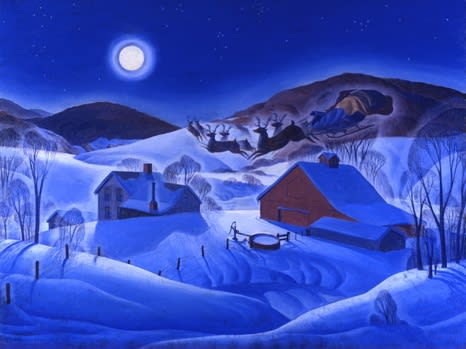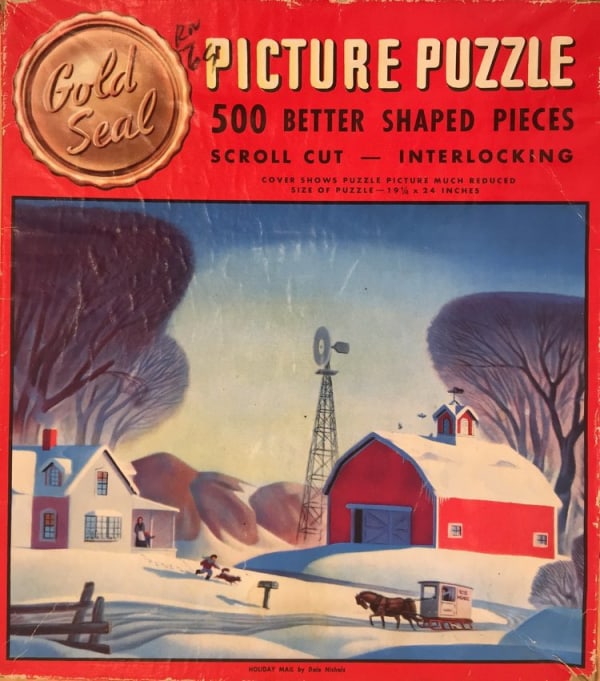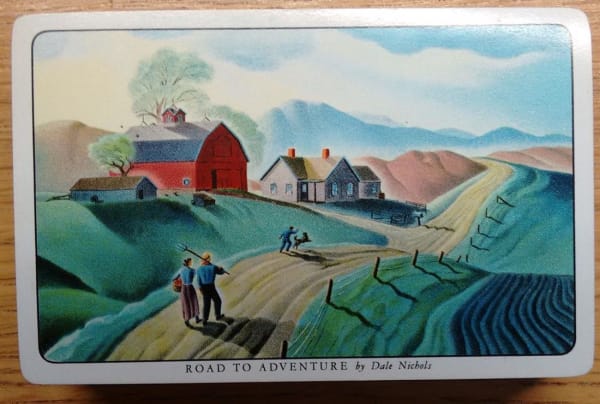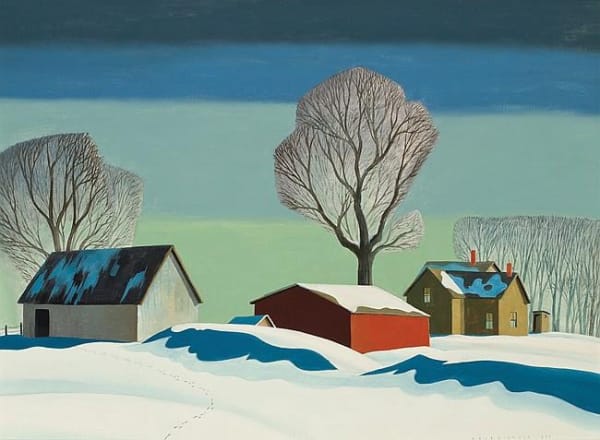This year Nebraska is celebrating 150 years of statehood. Nebraska has been the home of some very interesting people including Warren Buffet, Henry Fonda, Fred Astaire, Johnny Carson, Buffalo Bill, Gerald Ford, Malcolm X and Nick Nolte.
Statehood festivities have been taking place throughout the year and, in David City, just west of Omaha and north of Lincoln, population 2,887, the art and life of Dale Nichols, one of the most intriguing people to come out of Nebraska, is being celebrated.
The Bone Creek Museum
The Bone Creek Museum of Agrarian Art in David City houses an extensive collection of Dale Nichols works and memorabilia. For the sesquicentennial, Bone Creek is exhibiting the works of an additional 149 Nebraska artists, in an exhibit called 150 for Nebraska’s 150th, which runs through the July 30th.
Included in the exhibit are, not only works of Dale Nichols, but work by his niece, Ruth Nichols, with whom he corresponded for many years, writing to her about art and life. Ruth saved much of the correspondence, some of which is included a book called Dale Nichols: Transcending Regionalism, written by Amanda Monkey Guenther, Bone Creek Museum curator.
Painting the Red Barn
After Dale Nichols left the farm where he was raised, he moved to Chicago. He spent a very short time studying at the Chicago Academy of Fine Art, the Art Institute of Chicago and made a trip to study in Vienna.
Although his academic career lasted less than a year, he was very successful as a commercial artist and some of his work is part of the collection of the National Museum of American Illustration in Newport, Rhode Island.
Nichols spent fifteen years in Chicago, working as a commercial illustrator. He was not just a talented painter, but also a skilled lithographer, wood carver, designer, writer and an advocate of the use of fine art in commercialism. His illustrations were used on playing cards, crossword puzzles and in magazines, Christmas cards and US postage stamps and postcards. The Red Barn was a subject that he painted from his childhood memories, an image that resonated with Americans.
Despite his lack of academic credentials, in 1939 Nichols was named Carnegie Professor of Art at the University of Illinois, was featured in TIME magazine, and had his painting The End of the Hunt purchased by the Met. He became the Art Editor for the Encyclopedia Britannica, a position he held from 1943 through 1948.
The Symbol of the Red Barn
Nichols’ life was not as peaceful and tranquil as the rural scenes of his Red Barn paintings. He was married five times. He moved to Tubac, Arizona in 1948, where he painted and established an unsuccessful art school but did inject vitality into the community, which remains an artist’s colony to this day.
He led expeditions for Brown University to Guatemala, where he lived for fifteen years. He also lived and painted in Alaska, Louisiana and Mississippi. In a letter to his niece, Ruth, he wrote that he had never painted a realistic painting in his life and that his work was symbolic.
“I first compose my painting in an euphonious arrangement of rect-hedrons, tetrahedrons and spheroids,” he wrote, “then relieve the resultant static effect by opposing line, adding textures, symbolic abstractions and certain fragmentations (following Freudian interpretations) in colors which relate to preconceived mood.” Most of Nichols’ paintings, of the Red Barn in Nebraska, were painted far from Nebraska.
Please contact us for more information about the works of Dale Nichols for sale at Surovek gallery.





